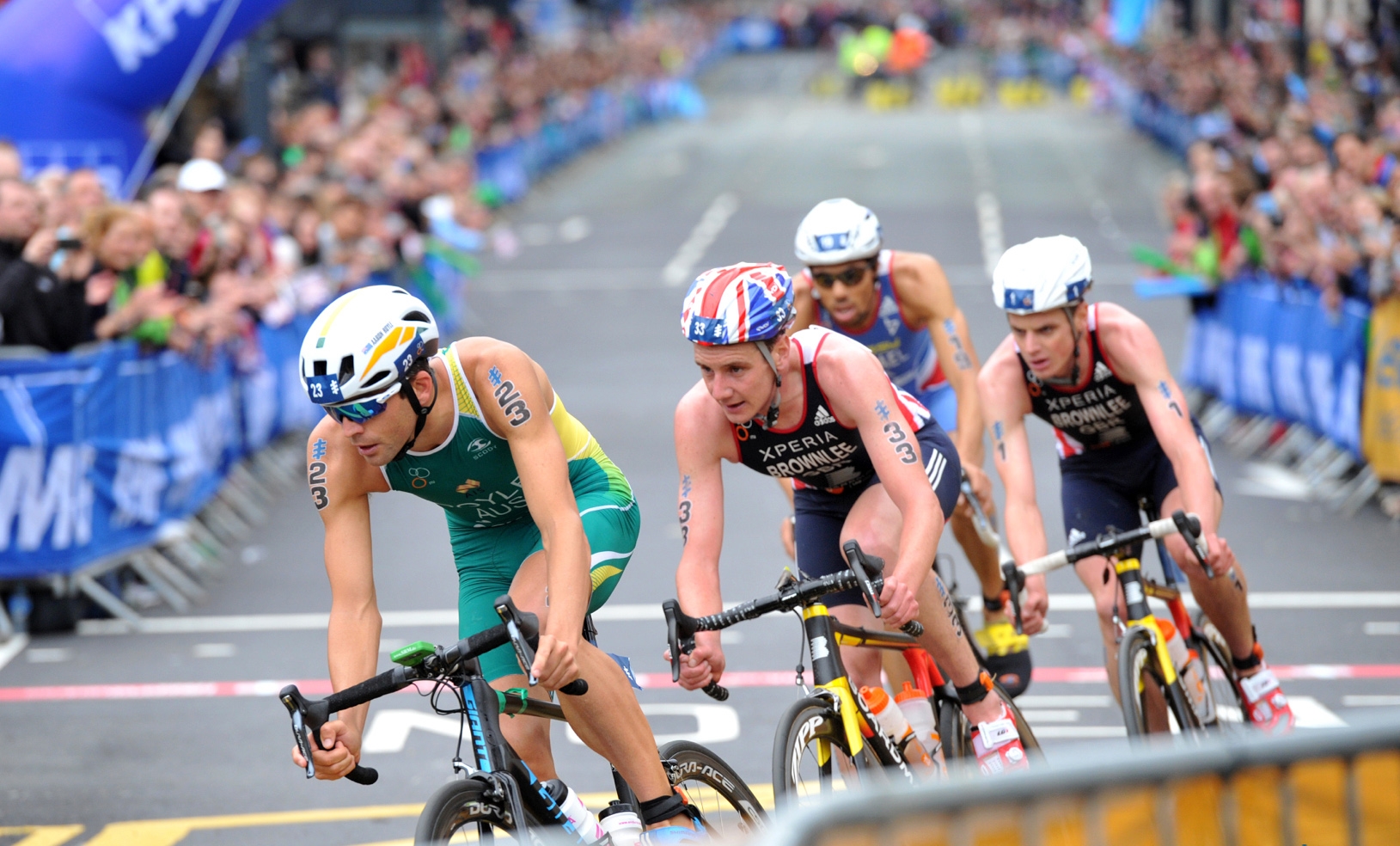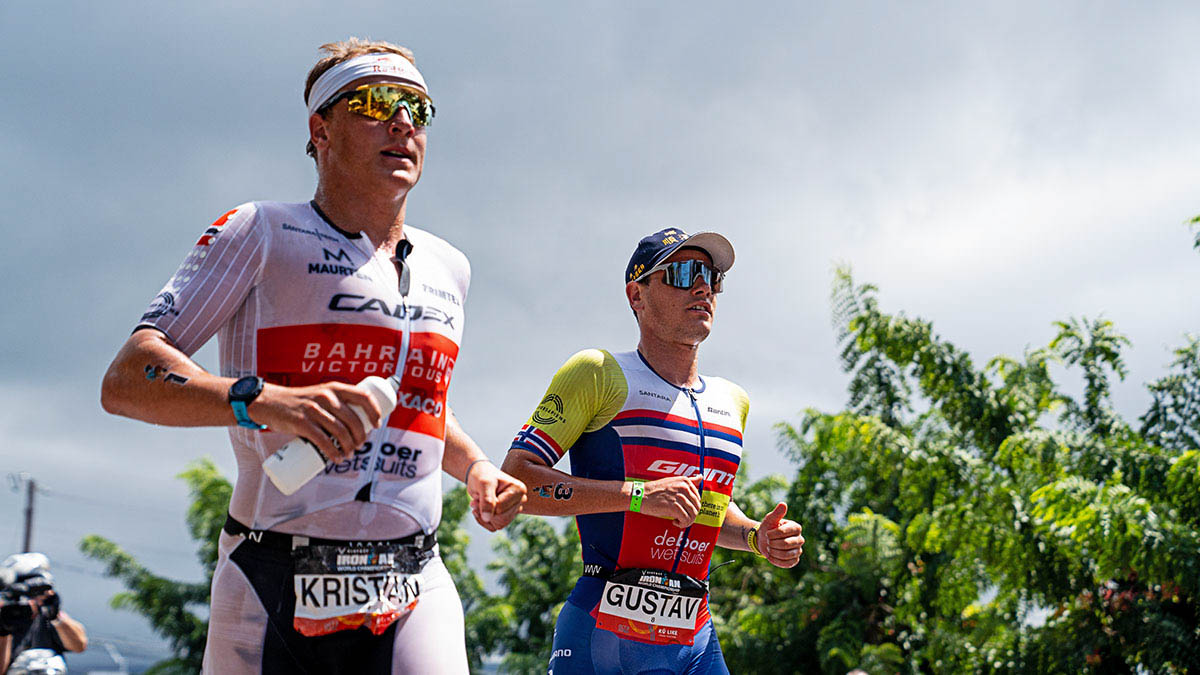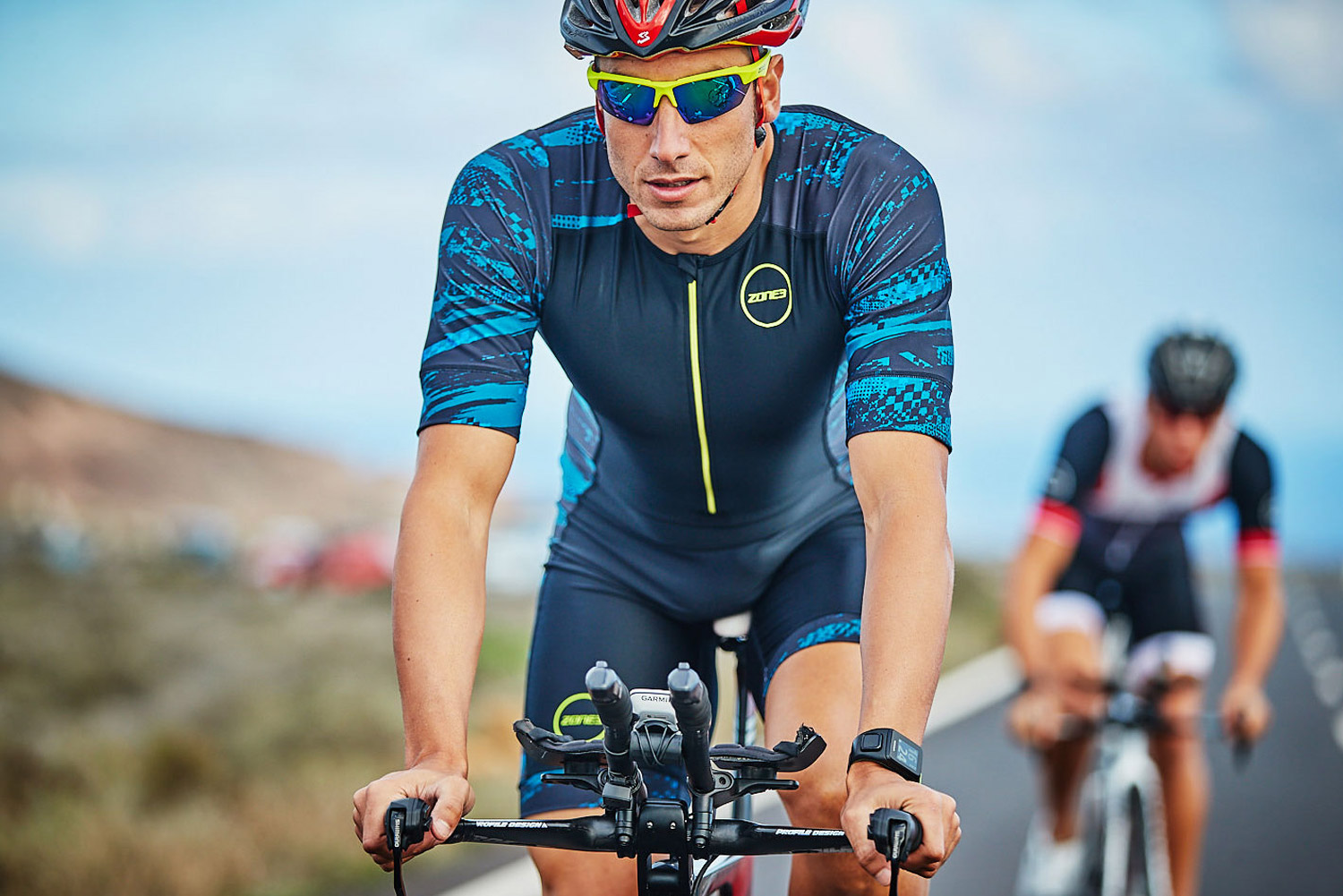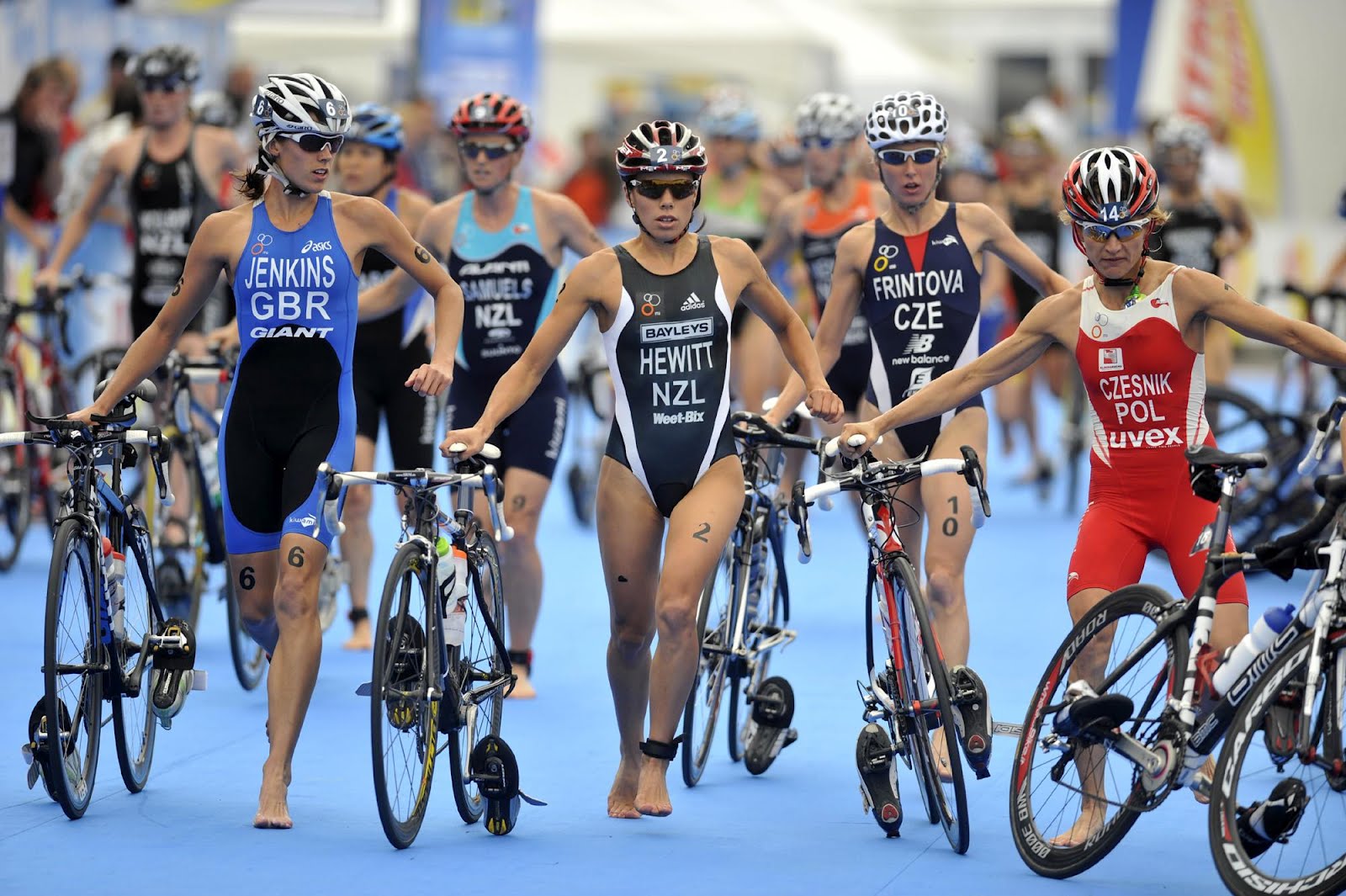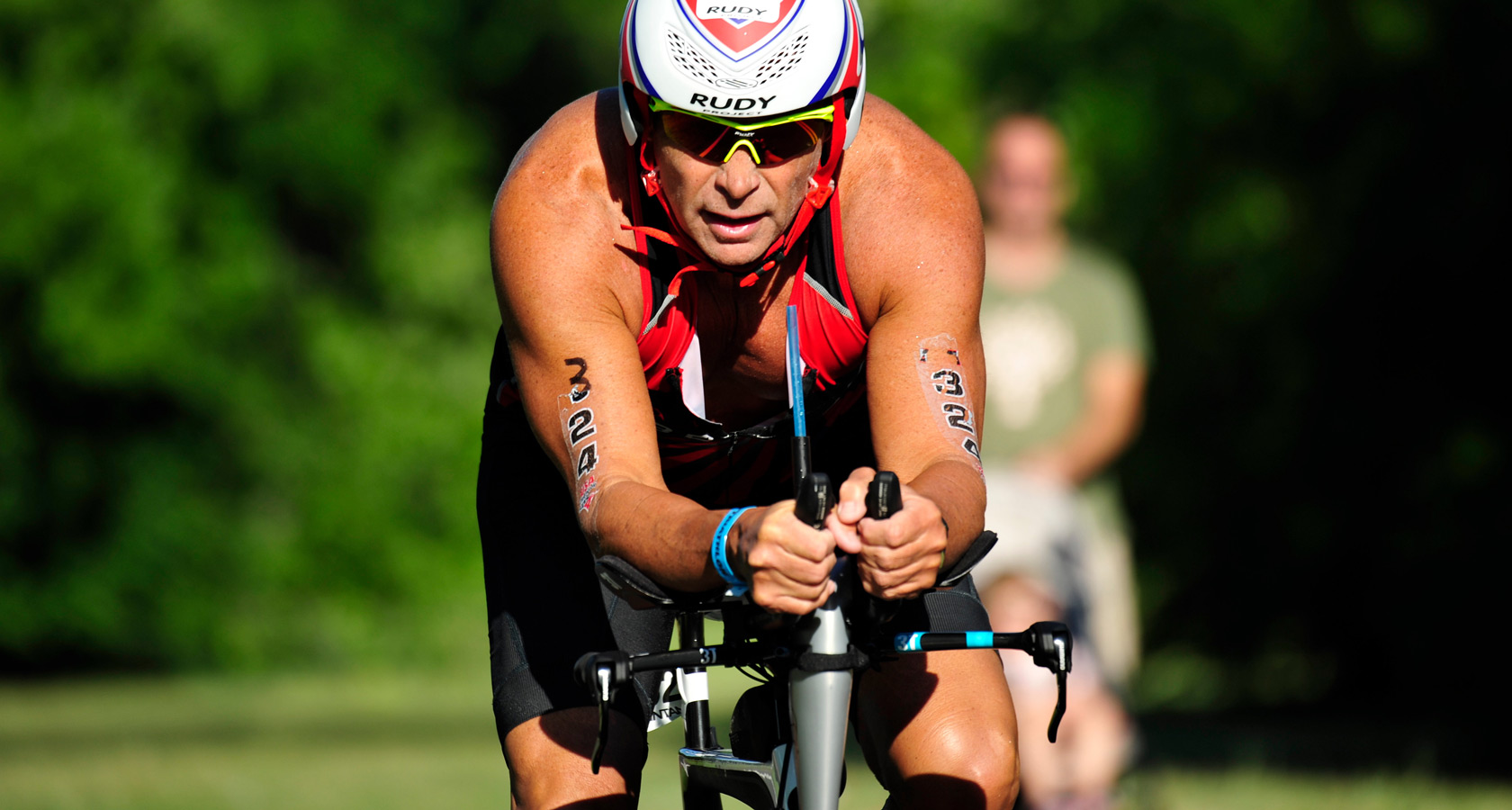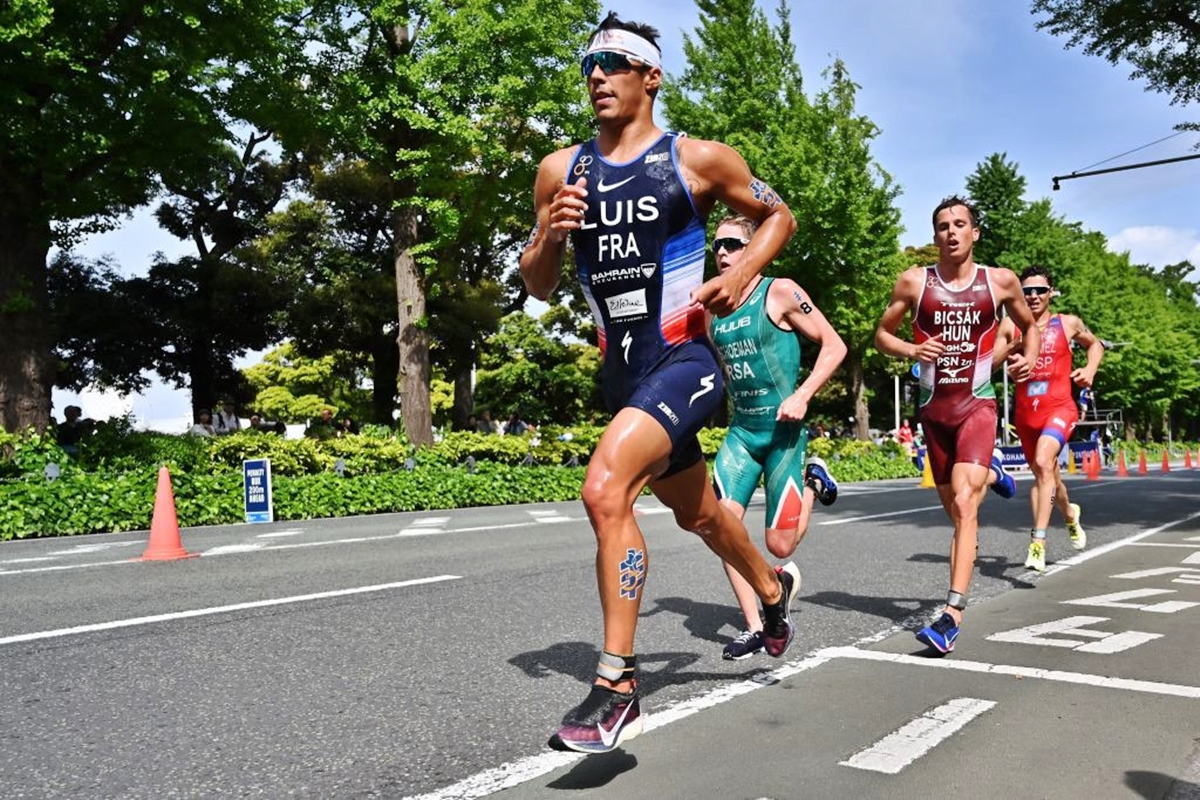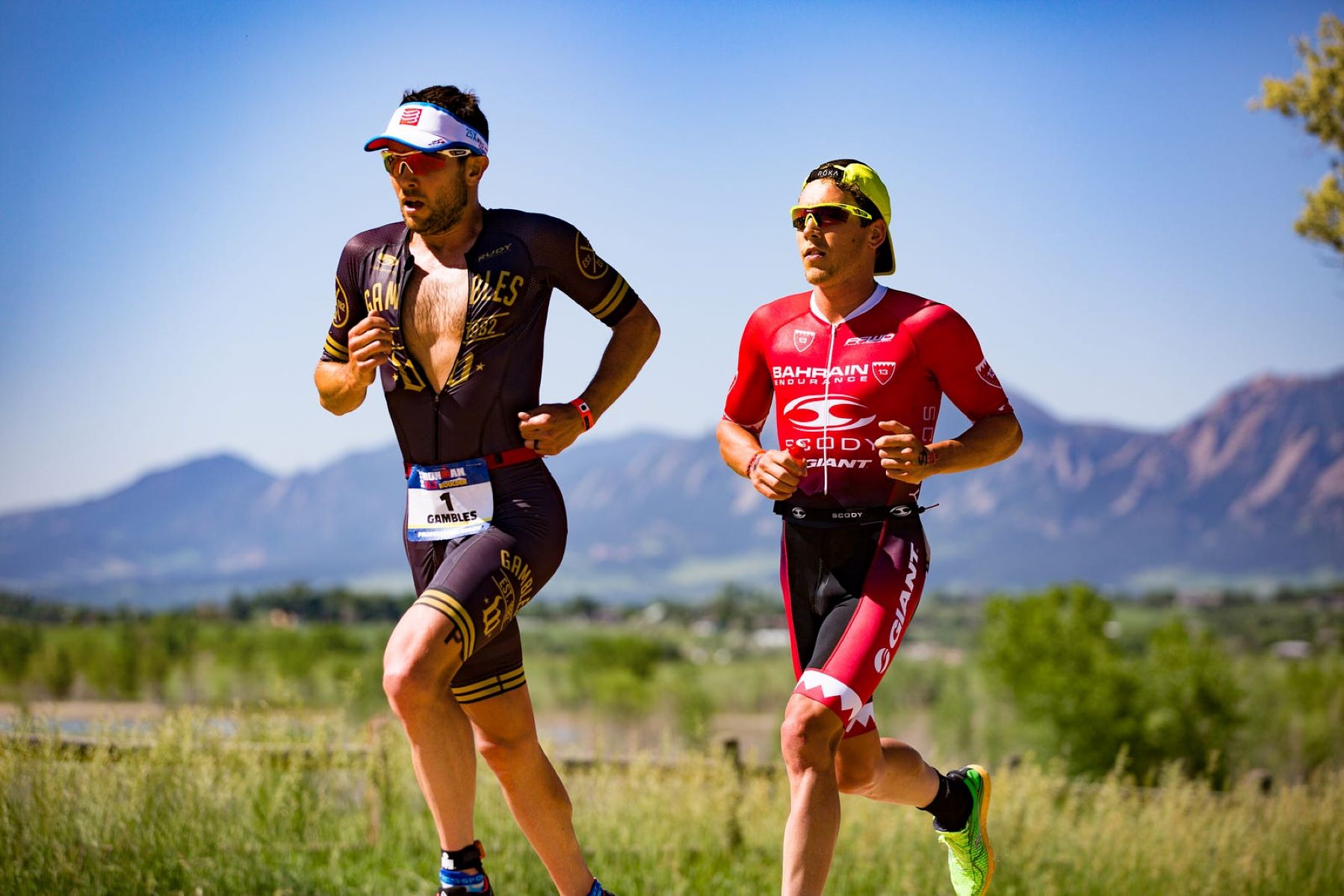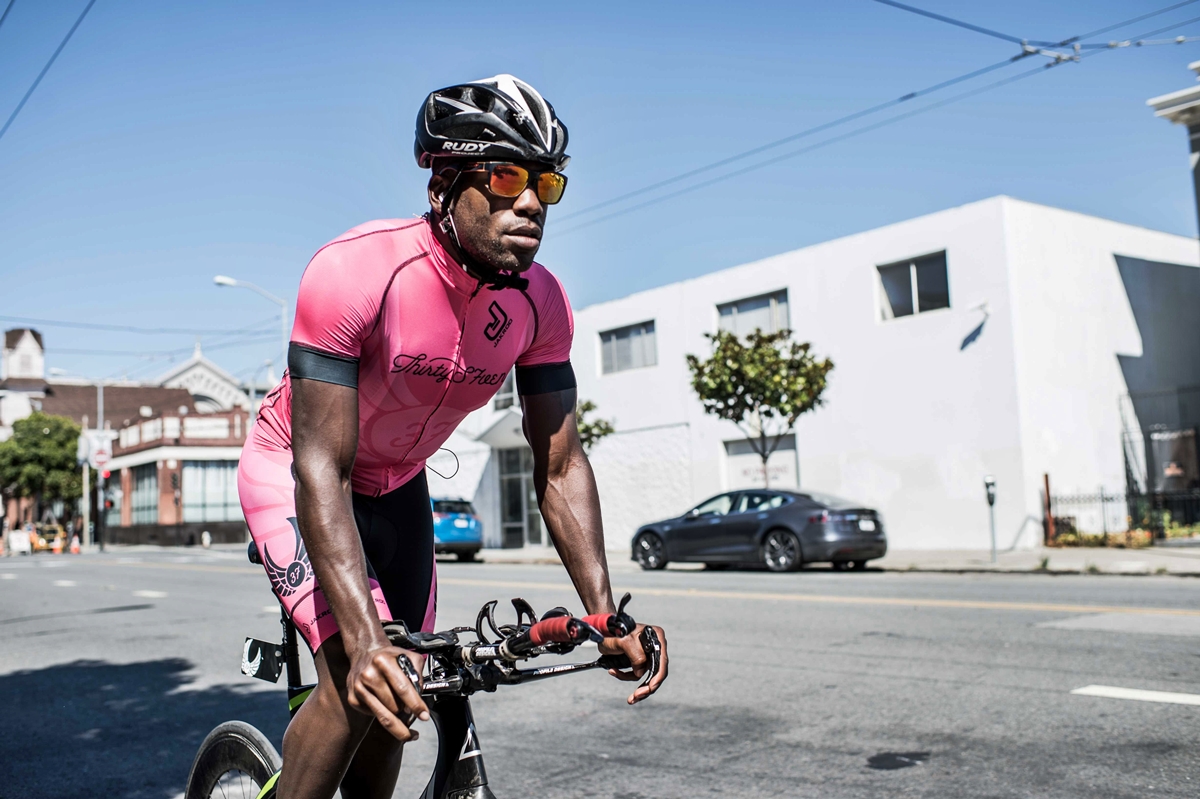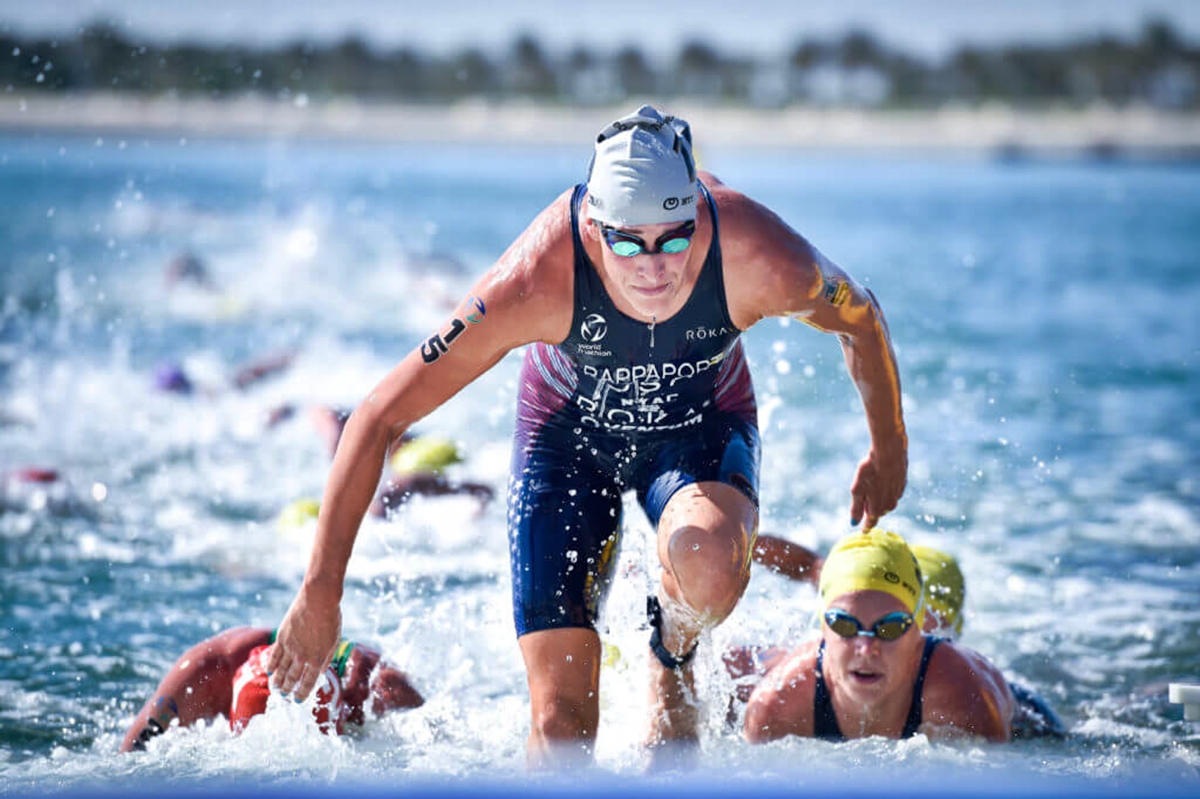

Featured
How Long Of A Swim Is In A Triathlon
Modified: January 2, 2024
Get ready for a featured triathlon event! Discover the challenging swim distance in a triathlon and prepare for the ultimate test of endurance.
Introduction
Welcome to the exciting world of triathlon! If you’re considering diving into the sport, you may be wondering just how long the swim portion of a triathlon can be. The swim is the first leg of a triathlon, followed by the bike and run segments. It sets the tone for the race and can have a significant impact on your overall performance.
Triathlons come in various distances, ranging from shorter sprints to grueling Ironman events. The length of the swim will depend on the distance you’re racing. Understanding the different swim distances and the factors that can affect them will help you prepare and plan accordingly for your triathlon journey.
In this article, we’ll explore the various distances of a triathlon swim, from sprints to Ironman races, and delve into the factors that influence the length of the swim. Whether you’re a beginner exploring the sport or a seasoned triathlete aiming for longer distances, this article will provide you with valuable insights to navigate the swim leg of your triathlon.
So, let’s dive in and discover just how long of a swim you can expect in a triathlon!
Understanding the Triathlon Swim
The swim leg of a triathlon is the starting point and sets the stage for the rest of the race. It requires endurance, technique, and mental strength to navigate the open water or pool. Understanding the nature of the triathlon swim will help you develop a strategy and approach that suits your abilities and goals.
One essential aspect of the triathlon swim is that it takes place in open water. This could be a lake, ocean, or river, presenting unique challenges compared to swimming in a controlled environment like a pool. Open water swimming requires adaptability, as you may encounter waves, currents, and limited visibility. It’s important to practice swimming in open water to become comfortable with these conditions.
In addition to the physical challenges, the triathlon swim also involves dealing with the adrenaline and excitement of the race start. Participants often experience a surge of adrenaline, which can impact breathing and technique. Learning to control your nerves and stay focused during the swim can greatly improve your performance.
Another crucial factor to consider is drafting. Drafting involves swimming closely behind or beside another participant to take advantage of the reduced drag and energy savings. However, drafting is not allowed in all triathlon events, particularly in non-drafting races such as Ironman. It’s important to familiarize yourself with the drafting rules of the specific race you are participating in.
Lastly, the transition from the swim to the bike segment, known as T1, is a critical aspect of the triathlon swim. Efficiently transitioning from the water to the bike can save you precious time and energy. Practice your transition skills to smoothly move from the swim to the bike, including taking off your wetsuit (if applicable), drying off, and getting your cycling gear ready.
Understanding the unique challenges and dynamics of the triathlon swim will help you develop a focused training plan and mental approach to tackle this crucial leg of the race. By honing your open water swimming skills, managing your adrenaline, and refining your transitions, you’ll be better prepared to conquer the swim and set the stage for a successful race.
Different Distances of a Triathlon Swim
Triathlon events come in various distances, catering to different skill levels and goals of participants. The swim leg distance will vary depending on the type of triathlon you choose to compete in. Let’s explore the different distances of a triathlon swim:
Sprint Triathlon Swim: In a sprint triathlon, which is the shortest distance race, the swim generally ranges from 400 to 750 meters (0.25 to 0.47 miles). This distance is suitable for beginners or those who prefer shorter and faster races. The swim is relatively shorter to ease participants into the multi-sport experience.
Olympic Triathlon Swim: The Olympic triathlon is the next step up in distance. The swim leg in an Olympic triathlon is typically 1.5 kilometers (0.93 miles). This distance requires a bit more endurance and is a common choice for intermediate triathletes aiming to challenge themselves.
Half Ironman Triathlon Swim: The swim distance in a Half Ironman, also known as a 70.3 race, is 1.9 kilometers (1.18 miles). This longer distance demands increased physical and mental stamina. Half Ironman races provide a steppingstone for athletes preparing for the ultimate endurance challenge: the full Ironman triathlon.
Ironman Triathlon Swim: The full Ironman distance is the pinnacle of triathlon challenges. The swim in an Ironman triathlon is typically 3.8 kilometers (2.36 miles). It requires extensive endurance training and mental fortitude to complete this distance. The swim leg in an Ironman event is a true test of a triathlete’s abilities.
It’s important to note that while these distances are common, variations can occur in specific races. It’s always a good idea to check the race details and course information when planning your training and preparation.
Choosing the right triathlon distance for your goals and abilities is key to a successful race experience. Whether you’re starting with a sprint or aiming for an Ironman, each distance provides unique challenges and rewards. Consider your swimming ability, fitness level, and long-term goals when selecting your triathlon distance.
Now that we have explored the different distances of a triathlon swim, let’s take a closer look at the factors that can affect the length of the swim leg in a triathlon.
Sprint Triathlon Swim
The sprint triathlon is a popular choice for beginners and those looking for a shorter, faster race. The swim leg in a sprint triathlon is generally between 400 to 750 meters (0.25 to 0.47 miles). This distance allows participants to get a taste of the triathlon experience without being overwhelmed by the endurance demands of longer races.
Given the shorter distance, the swim leg in a sprint triathlon is typically completed in a pool. This controlled environment provides a familiar and safe setting for novice swimmers. Pool swims also allow for precise distance measurements and make it easier for race organizers to manage participant flow and safety.
Racing in a pool also means that participants often compete in waves, with multiple swimmers starting at the same time. Depending on the number of lanes and participants, each wave may include several swimmers. This can create some congestion, especially during the initial moments of the swim. It’s essential to position yourself properly and be mindful of other swimmers to avoid collisions or getting caught up in the start line chaos.
Another aspect to consider in the sprint triathlon swim is the swim technique. With a shorter distance, swimmers may opt for a more intense and aggressive pace. This may involve more emphasis on speed and power rather than pacing or conserving energy, as in longer distance races. Practicing efficient stroke technique and building swim-specific endurance will help you tackle the sprint triathlon swim with confidence.
Furthermore, the swim-to-bike transition in a sprint triathlon, also known as T1, can be a crucial segment. Since sprint triathlons are relatively short, every second counts. Being able to transition quickly from the swim to the bike can give you a competitive edge. Practice your transition skills to streamline the process and save valuable time during the race.
Although the swim leg in a sprint triathlon may be shorter, it’s still important to train and prepare adequately. Depending on your swimming background, you may consider seeking professional coaching or joining a swim group to improve your technique and build endurance. Regular swim training, coupled with open water practice if available, will contribute to a successful sprint triathlon swim.
In summary, the sprint triathlon swim provides an entry point into the exhilarating world of triathlon. With a pool-based swim and shorter distance, it offers a great opportunity for beginners to experience the multisport discipline. Remember to focus on swim technique, navigate through the start line congestion, and optimize your T1 transition for a strong performance in the sprint triathlon swim.
Olympic Triathlon Swim
The Olympic triathlon is a significant step up from the sprint distance, providing a greater challenge for athletes seeking to push their limits. The swim leg in an Olympic triathlon is typically 1.5 kilometers (0.93 miles), making it more than twice the distance of a sprint triathlon swim.
Unlike sprint triathlons, Olympic triathlons usually take place in open water, such as lakes, oceans, or rivers. Swimmers must adapt to changing conditions, including waves, currents, and limited visibility. Open water swimming requires a different set of skills and adjustments compared to swimming in a pool. It is essential to practice in open water to become comfortable with these challenges and develop necessary navigation and sighting techniques.
In an Olympic triathlon swim, participants often start in waves, with multiple swimmers setting off together. This can create more significant congestion compared to a sprint triathlon, as there are typically more participants. Positioning yourself properly at the start and finding open space to swim without interference are crucial to getting off to a favorable start.
Unlike sprint triathlons, drafting during the swim leg is strictly prohibited in most Olympic triathlons. This means swimmers must rely solely on their own skill and effort without the advantage of reduced drag from swimming closely behind others. It’s important to practice maintaining a steady and efficient pace throughout the entire swim leg, as drafting is not an option for gaining an advantage.
Similar to the sprint distance, the swim-to-bike transition, known as T1, is an important segment in an Olympic triathlon. Transitioning smoothly and quickly from the swim to the bike can help maintain momentum and minimize time lost. Practice your transitions including removing your wetsuit (if applicable), drying off, and getting ready for the bike segment to optimize your T1 performance.
Preparation for an Olympic triathlon swim should include a combination of pool training and open water practice. Interval training and longer swims will help build endurance and improve swim-specific fitness. Incorporating technique drills and working on sighting skills will enhance your open water swimming ability. Consider joining a swim group or seeking guidance from a swim coach to help you refine your stroke technique and prepare for the challenges of an Olympic triathlon swim.
In summary, the Olympic triathlon swim offers a significant step up in distance and challenges. With open water swimming and strict drafting rules, it requires a different skill set than a sprint triathlon. Give yourself ample time to train, practice in open water, and refine your swimming technique to conquer the 1.5-kilometer swim leg of an Olympic triathlon.
Half Ironman Triathlon Swim
The Half Ironman triathlon, also known as a 70.3 race, takes triathlon to a new level of endurance and commitment. The swim leg in a Half Ironman is typically 1.9 kilometers (1.18 miles), significantly longer than both the sprint and Olympic distances.
Like the Olympic triathlon, the swim leg of a Half Ironman takes place in open water. This means participants must navigate through waves, currents, and potentially poor visibility. Open water swimming skills become even more critical in a Half Ironman, as the longer distance means more time spent in the water. Regular open water practice is essential to develop confidence, refine your sighting technique, and adapt to the challenges of the environment.
Due to the increased distance, the swim leg in a Half Ironman usually starts in smaller waves or groups. This helps spread out the field of participants and reduce congestion in the water. It’s still important to find your position and swim the shortest distance possible, but the larger waves seen in sprint or Olympic triathlons are less common in the Half Ironman.
Unlike the shorter distances, drafting during the swim leg of a Half Ironman is allowed. Swimmers can benefit from reduced drag by positioning themselves closely behind others. However, it’s important to be mindful of the draft zone rules and avoid unsafe or unfair drafting practices. Practice swimming in close proximity to others to optimize the drafting advantage while remaining within the regulations.
The swim-to-bike transition, T1, becomes even more critical in a Half Ironman. As the race distance increases, efficient transitions become increasingly important to conserve energy and maintain momentum. Practice your T1 transitions, including removing your wetsuit if needed, drying off, and getting ready for the bike leg. Smooth and quick transitions can give you an edge as you progress through the race.
Preparing for the Half Ironman swim requires a commitment to training and building endurance. Regular swim sessions, both in the pool and open water, will help develop swim-specific fitness and improve your overall performance. Incorporate longer-distance swims and interval training to build both physical and mental stamina.
Consider seeking guidance from a swim coach or joining a triathlon training group to support your preparation. They can provide valuable insights, technique feedback, and structured swim workouts. Additionally, participating in open water swim races or simulated swim segments during your training can enhance your race readiness.
In summary, the Half Ironman triathlon swim presents a significant increase in distance and challenges compared to shorter triathlon events. Open water swimming skills, drafting strategies, and efficient transitions become more important in this extended swim leg. Training consistently and incorporating longer and more intense swim sessions will set you up for success in the 1.9-kilometer swim of a Half Ironman triathlon.
Ironman Triathlon Swim
The Ironman triathlon is the pinnacle of endurance events, pushing athletes to their limits both mentally and physically. The swim leg in an Ironman triathlon is a grueling 3.8 kilometers (2.36 miles), requiring extensive training and preparation.
As with the other distances, the swim leg of an Ironman takes place in open water. Swimmers must navigate through unpredictable waves, currents, and potentially challenging weather conditions. Open water swimming skills are crucial for success in the Ironman swim, as the longer distance means more time spent in the water.
Given the lengthy swim, Ironman races typically start with larger waves or groups to help spread out the field of participants. This helps reduce congestion in the water, allowing swimmers to find their rhythm and space. However, it’s still important to start the swim strategically and find a good position, as the large number of participants can create some initial chaos and jostling.
In contrast to the shorter triathlon distances, drafting during the swim leg of an Ironman is generally not allowed. This means swimmers must rely solely on their own strength and technique without the advantage of drafting off other competitors. It’s crucial to maintain a steady pace throughout the swim, conserving energy for the challenging bike and run legs that follow.
The swim-to-bike transition, T1, is a critical segment in an Ironman triathlon. Efficiently transitioning from the swim to the bike can save valuable time and energy. Practice your transitions regularly, including removing your wetsuit (if applicable), drying off, and preparing for the bike leg. Well-executed transitions will help you maintain momentum and get off to a strong start on the bike.
Preparing for the Ironman swim requires months of dedicated training and preparation. Long swims, both in the pool and open water, are essential to build the necessary endurance and mental fortitude. Gradually increase the distance and duration of your swim workouts, simulating the demands of the Ironman swim. Incorporate interval training and endurance sets to improve both speed and stamina.
Open water practice is crucial for developing the skills required to tackle the 3.8-kilometer distance. Seek out opportunities to swim in open water, familiarizing yourself with different conditions and practicing sighting techniques. Familiarize yourself with the swim course of the specific Ironman event you’re participating in, as well as any rules or regulations specific to the race.
Consider investing in swim coaching or joining a triathlon training group to get expert guidance in refining your stroke technique and building endurance. Training with others can provide support and motivation, and receiving feedback from a coach can help you identify areas for improvement.
In summary, the Ironman triathlon swim is a true test of an athlete’s endurance and mental strength. With a challenging distance and open water conditions, thorough training, and preparation are essential. Utilize a combination of pool and open water sessions, focus on efficient transitions, and gradually build up your swim distance and intensity to succeed in the 3.8-kilometer swim of an Ironman triathlon.
Factors Affecting the Length of the Triathlon Swim
The length of the swim leg in a triathlon can vary depending on various factors. Understanding these factors can help athletes prepare and plan for the specific requirements and challenges of their chosen race distance. Let’s explore some of the key factors that can affect the length of the triathlon swim:
Race Distance: Naturally, the primary factor determining the length of the swim is the distance of the triathlon event. Different race distances, such as sprint, Olympic, half Ironman, and Ironman, have specific standards for their swim distances. As the race distance increases, so does the length of the swim leg, demanding greater endurance and swim-specific fitness.
Location: The location of the triathlon can also impact the length of the swim. Races organized in bodies of water like lakes, oceans, or rivers may have different course layouts compared to events held in pools. Open water swims can vary in distance depending on the available space and route design. Additionally, factors such as currents and tides can influence the overall swim distance and level of difficulty.
Regulations and Guidelines: Each race has its own set of regulations and guidelines that may determine the specific swim distance. Governing bodies like USA Triathlon or the International Triathlon Union (ITU) dictate standards for swim distances in sanctioned events. These regulations ensure fair and consistent competition across different races and provide a level playing field for athletes.
Safety Considerations: Safety is a top priority in any triathlon. Race organizers consider factors like water temperature, prevailing weather conditions, and the swim abilities of participants when determining the swim course. Swim distances may be adjusted in the interest of athlete safety. Extreme weather conditions or challenging water temperatures can lead to modifications in the swim leg to ensure the well-being of participants.
Course Design: The design and layout of the swim course can also affect the swim distance. Triathlon races may feature different course configurations, such as loops, out-and-backs, or point-to-point swims. The race organizers carefully plan the swim course to optimize participant safety, navigation, and logistical considerations. It’s important for athletes to familiarize themselves with the course design to plan their race strategy and mental preparation accordingly.
Organizer’s Discretion: In some instances, the race organizer may have the discretion to adjust the swim distance based on factors like venue restrictions, time constraints, or logistical considerations. These adjustments could be made to accommodate a particular location or event schedule.
It’s important for triathletes to research and understand these factors for the specific race they are participating in. This knowledge will help them tailor their training, prepare for the challenges ahead, and ensure they are fully equipped to handle the swim leg of their chosen triathlon distance.
Training for the Triathlon Swim
Training for the triathlon swim is an essential component of preparing for a successful race. Building swim-specific fitness, improving technique, and developing open water skills are key elements to focus on during swim training. Here are some important aspects to consider when training for the triathlon swim:
Consistency: Consistency is crucial in swim training. Regularly scheduled swim sessions will help build endurance, improve technique, and increase overall swim fitness. Aim for a balance of focused swim workouts and longer, slower swims to develop both speed and stamina.
Open Water Practice: Since triathlon swims often take place in open water, it’s important to practice in similar conditions. Seek out opportunities to swim in open water to become familiar with the challenges of waves, currents, and limited visibility. Practice sighting during open water sessions to improve navigation and maintain a straight swim line.
Technique Work: Efficient swim technique is essential for conserving energy and improving speed. Include drills and technique-focused exercises in your swim workouts to refine your stroke and body position. Working with a swim coach or joining a swim group can provide valuable feedback and guidance to help perfect your technique.
Endurance Training: The swim leg of a triathlon requires endurance, so it’s important to incorporate longer swims into your training plan. Gradually increase your swim distances, simulating the race distance to build the necessary physical and mental stamina. Mixing endurance sets with interval training can also enhance your overall swim fitness.
Brick Workouts: Incorporating brick workouts into your training plan can help transition smoothly from the swim to the bike segment. After a swim session, practice quickly transitioning into your cycling gear and getting on the bike. This will simulate race conditions and help your body adapt to the transition from swim to bike.
Strength and Flexibility: Strengthening the muscles used in swimming, such as the shoulders, core, and legs, can improve swim performance and help prevent injuries. Incorporate strength training exercises specific to swimming into your overall training program. Additionally, maintaining flexibility through stretching and mobility exercises will enhance your range of motion and overall swim efficiency.
Race Simulation: As race day approaches, incorporate race simulation workouts into your training plan. This involves mimicking the race conditions by swimming the anticipated race distance and practicing transitions. This will help familiarize yourself with the physical and mental demands of the race and ensure you are prepared for the actual event.
Seek Professional Guidance: Consider working with a qualified swim coach or joining a triathlon training group to optimize your swim training. A coach can provide personalized training plans, technique feedback, and guidance on optimizing your swim performance. Training with others can also provide motivation and accountability.
Remember, an effective swim training plan should be tailored to your specific needs and goals. Periodically reassess your progress, make adjustments as necessary, and listen to your body to avoid overtraining. With a consistent and focused approach to swim training, you’ll be well-prepared to tackle the triathlon swim leg and set yourself up for a successful race.
Conclusion
The triathlon swim leg is a fundamental component of the multi-sport experience, setting the tone for the rest of the race. Understanding the different distances, factors influencing the swim length, and how to train effectively are key elements for triathletes to succeed in the swim portion of their chosen race.
From the sprint triathlon to the Ironman, each distance presents its own unique challenges and rewards. Whether you’re a beginner embarking on your first sprint race or a seasoned triathlete preparing for an Ironman, it’s important to set appropriate goals and tailor your training accordingly.
Factors such as race distance, location, regulations, safety considerations, and course design can all influence the length of the triathlon swim. Researching and understanding these factors will help athletes plan and prepare effectively for their specific race.
Training for the triathlon swim requires consistency, open water practice, technique refinement, endurance building, and a focus on strength and flexibility. Incorporating these elements into your training plan, along with brick workouts and race simulations, will ensure you are well-prepared for the swim leg and the transitions that follow.
Remember, each athlete’s triathlon journey is unique. It is important to listen to your body, seek professional guidance when needed, and make adjustments to your training plan as necessary. With dedication, perseverance, and proper preparation, the triathlon swim leg can be conquered and set the stage for an exhilarating and rewarding race experience.
